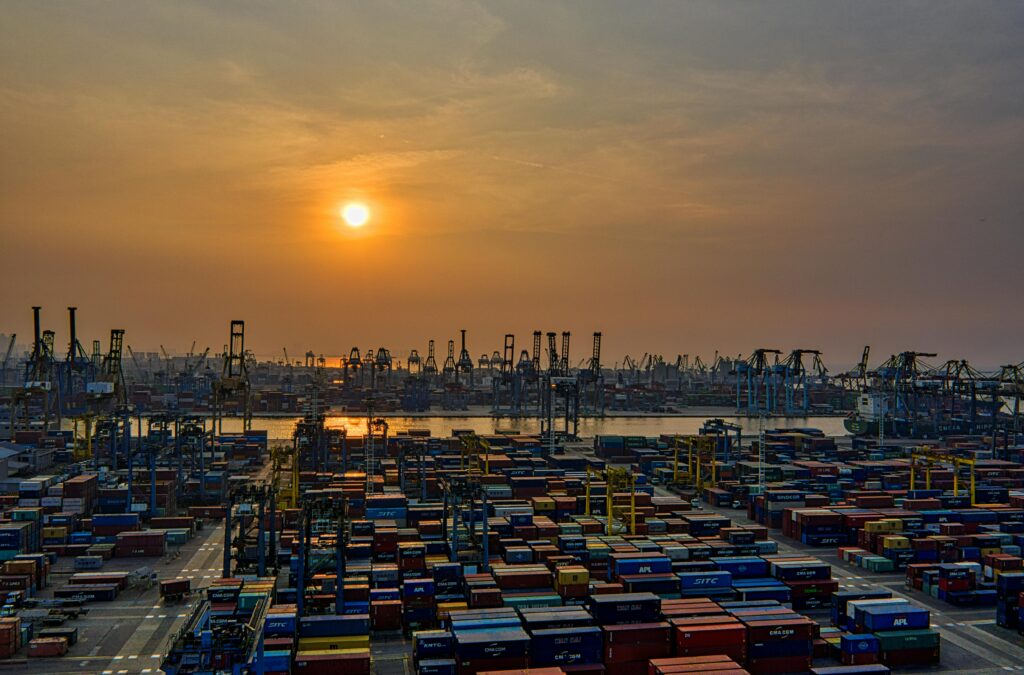Intermodal drayage is a crucial yet often disregarded component of contemporary shipping and logistics. It facilitates the efficient movement of goods through complex supply chains by serving as the crucial connection between various modes of transportation. Intermodal drayage refers to a specific type of drayage services that specialize in transporting cargo containers over short distances using many modes of transportation, such as trucks, trains, andships. Short-haul trucking plays a vital role in intermodal transportation,which leverages the benefits of many modes to efficiently deliver freight overlong distances.
The functioning of intermodal transport
Imagine a cargo container arriving at a port after a long sea journey. The container must be transported to its ultimate inland location. In order to bridge this divide, intermodal transport is utilized. Upon the arrival of the drayage trucks at the port, they are equipped with specialized apparatus to facilitate the handling of containers. These vehicles are used to put the containers onto trains at a nearby rail yard for long voyages. A separate fleet of drayage vehicles retrieves the containers from the rail yard at the destination and delivers them directly to the warehouse or distribution center, which is their final destination.
The Worth of Multimodal Transportation in Supply Chains
Contemporary supply chains heavily depend on multimodal drayage to ensure their efficiency and cost-effectiveness. By integrating many means of transportation,it reduces the likelihood of harm and delays, eliminating the necessity for frequent cargo handling. Multimodal transportation provides shippers with increased flexibility in their transportation strategies,allowing them to choose the most optimal mode of transportation for each segment of the journey, thus optimizing both cost and delivery time. Multimodal transportation plays a crucial role for industries such as manufacturing, retail, and agriculture that rely on transporting goods over large distances. Multimodal Transportation facilitates the seamless transfer of cargo between trucks,trains, and ships, ensuring prompt and cost-effective delivery of goods to their intended location.
Significant Intermodal transport Varieties
• Pier drayage: This term describes the process of moving containers from ships to nearby rail yards or warehouses.
• Rail drayage: Rail drayage is a form of transportation that specifically involves the movement of containers from rail yards to other points in the supply chain, such as distribution centers or warehouses.
• Door-to-door drayage: Provides comprehensive transportation services, utilizing different methods of transportation as required, to deliver goods from the shipper’s location to the recipient’s location.
Identifying the Right Intermodal Transportation Provider
Selecting the suitable Intermodal transportation provider is crucial for the success of your logistics endeavors. When making a selection, it is important to consider the following factors:
• Experience and expertise: Select a supplier with a proven history of effective intermodal drayage. They should have a high level of proficiency in managing various types of goods and possess a comprehensive understanding of the complexities of multimodal transportation.
• Network and Coverage: Ensure that the supplier has an extensive network of drayage terminals and partners that cover the specific areas where your goods need to be transported.
• Technological integration and transparency: Choose a service provider that utilizes advanced technology to provide you with immediate access to live tracking and complete visibility of your shipments.
• Customer service: Exceptional customer service is essential for efficient communication and effective problem-solving when faced with unexpected issues.
Intermodal drayage is a crucial element of the complex system of modern logistics. It enables seamless connectivity between different modes of transportation, facilitating efficient delivery of goods across long distances.Businesses may enhance their logistics operations, reduce expenses, and enhance customer satisfaction by understanding the role of drayage across modes in the supply chain and choosing the most suitable provider.
FAQs About Intermodal Drayage
When cargo arrives at a port, it’s unloaded from a ship and transferred onto a drayage truck. The truck then transports the container to a rail yard or directly to its final destination. If the container needs to be moved by rail, it’s loaded onto a train and transported to another intermodal facility, where it’s again picked up by a drayage truck for final delivery.
When selecting an intermodal drayage provider, consider the following factors:
Experience and reputation: Look for a provider with a proven track record and positive customer reviews.
Network and service area: Ensure the provider operates in the locations you need and has a well-established network of partners.
Technology and tracking: Choose a provider that utilizes modern technology for tracking and managing shipments.
Insurance coverage: Verify that the provider has adequate insurance to protect your cargo in case of damage or loss.
Customer service: Opt for a provider that is responsive, communicative, and dedicated to meeting your needs.
Intermodal drayage is the transportation of shipping containers between different modes of transport, such as ships, trains, and trucks. It’s a crucial link in the intermodal shipping process, ensuring seamless movement of goods across the supply chain.

